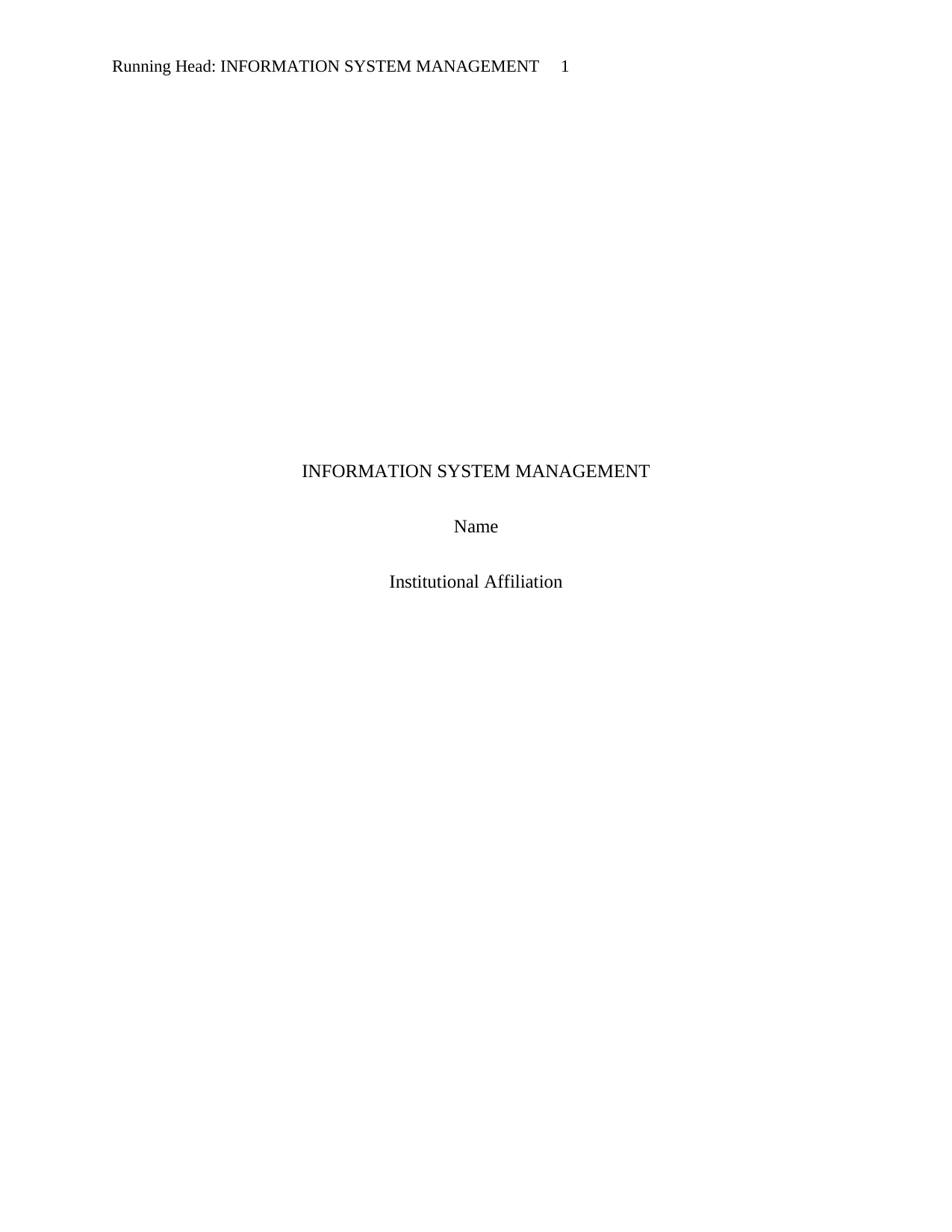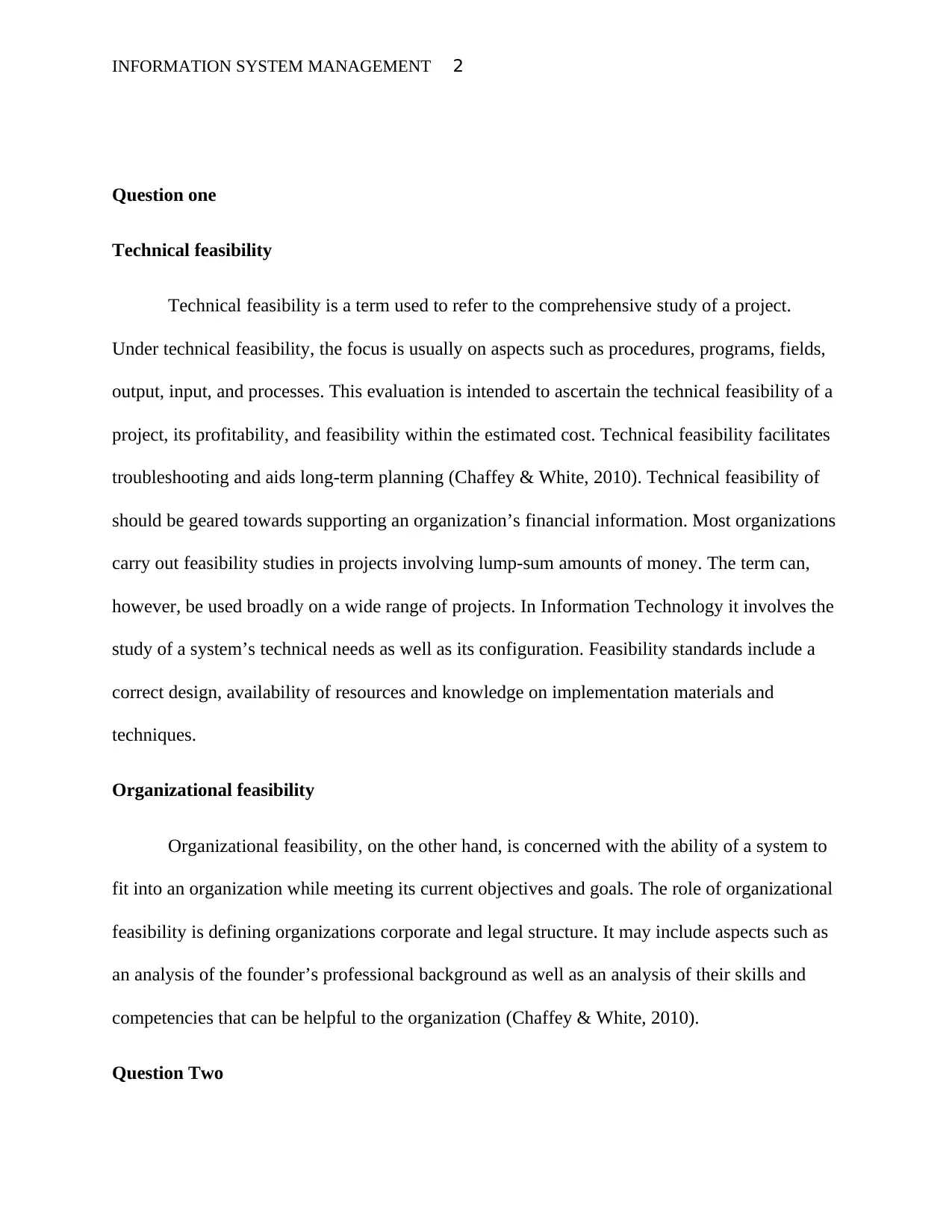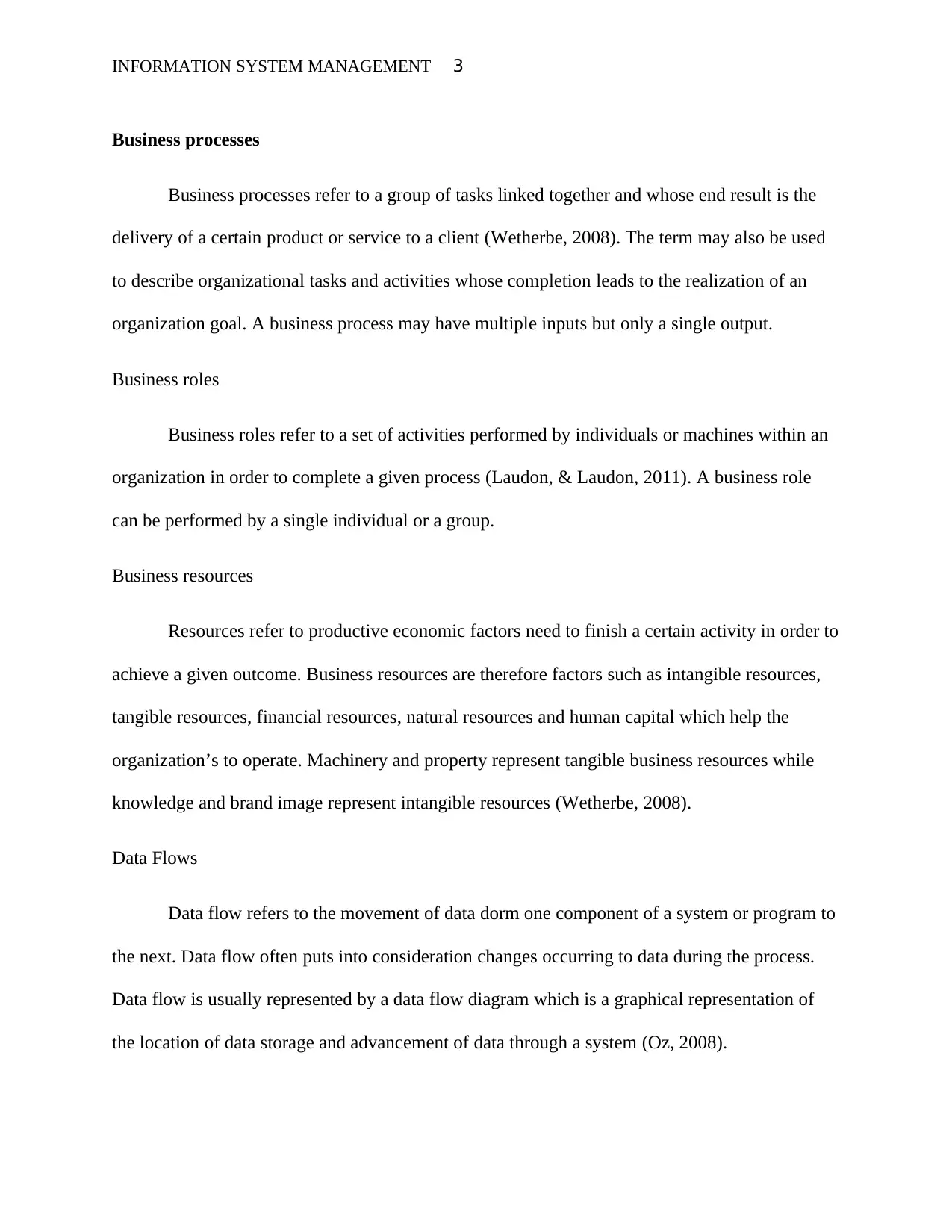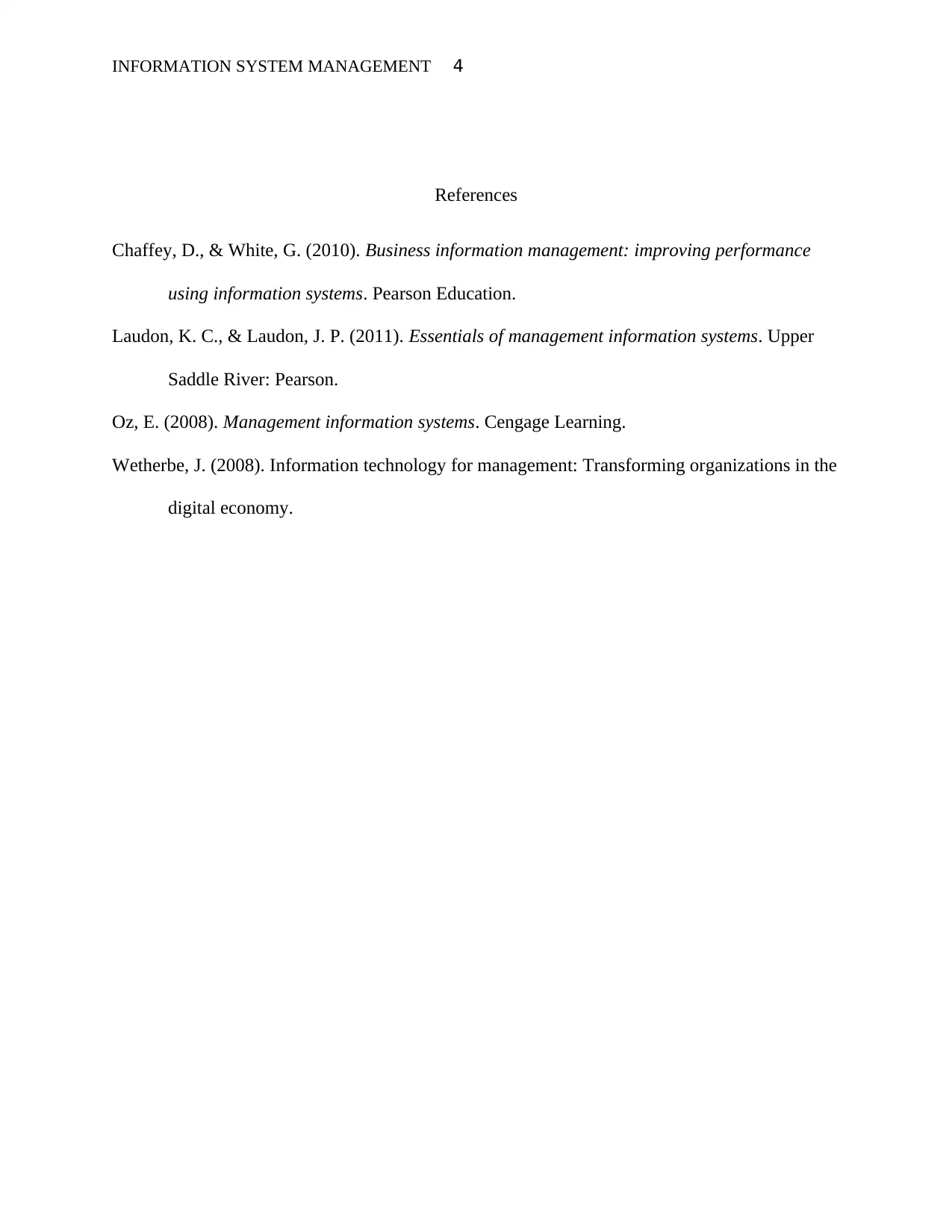Analyzing Feasibility & Core Concepts in Information System Management
VerifiedAdded on 2023/06/11
|4
|625
|372
Report
AI Summary
This report provides an overview of key concepts in information system management, focusing on technical and organizational feasibility. Technical feasibility is defined as the comprehensive study of a project, focusing on procedures, programs, and processes to ascertain its viability and profitability. Organizational feasibility, on the other hand, assesses the ability of a system to integrate into an organization while meeting its objectives. The report also defines business processes as linked tasks delivering a product or service, business roles as activities performed by individuals or machines, business resources as productive economic factors, and data flows as the movement of data within a system. The document concludes with relevant references, offering a foundational understanding of information system management principles. Desklib provides access to similar solved assignments and study tools for students.
1 out of 4











![[object Object]](/_next/static/media/star-bottom.7253800d.svg)